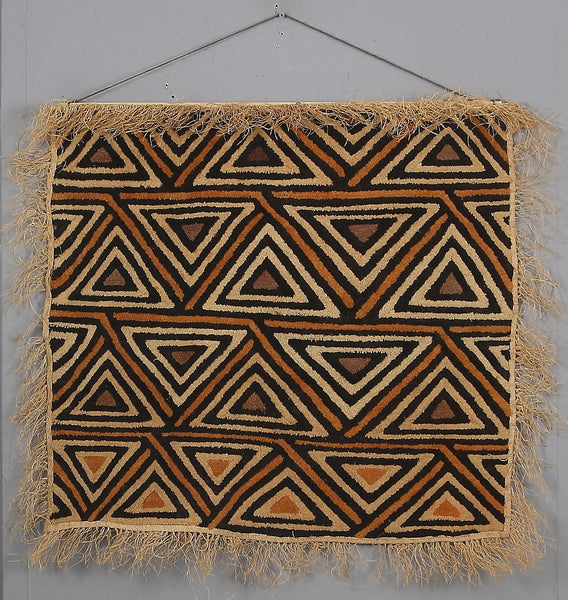
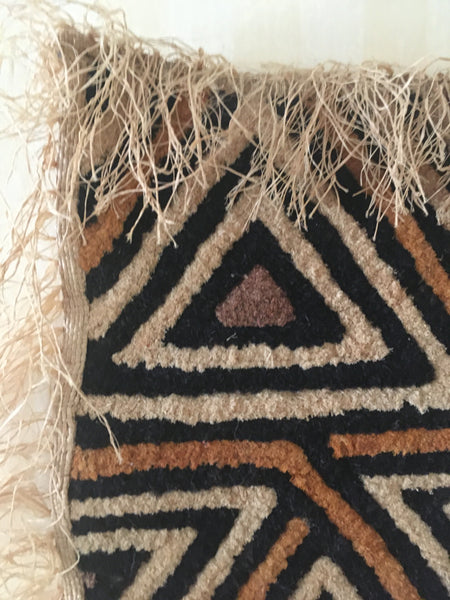
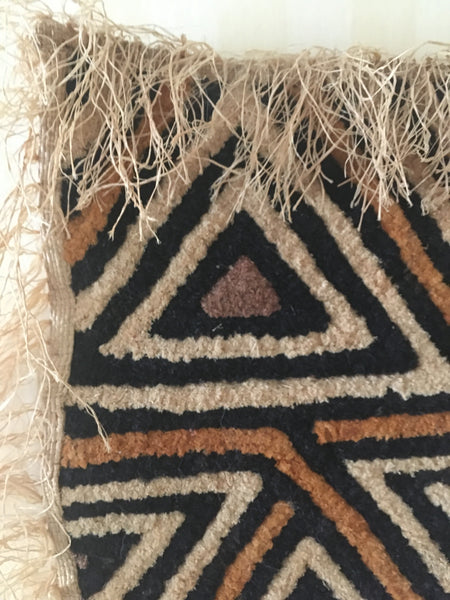
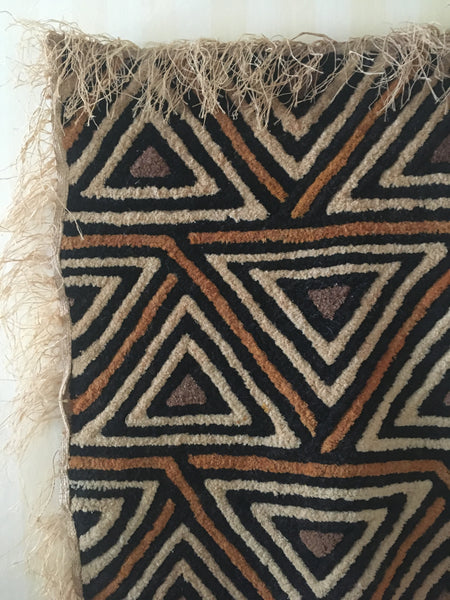
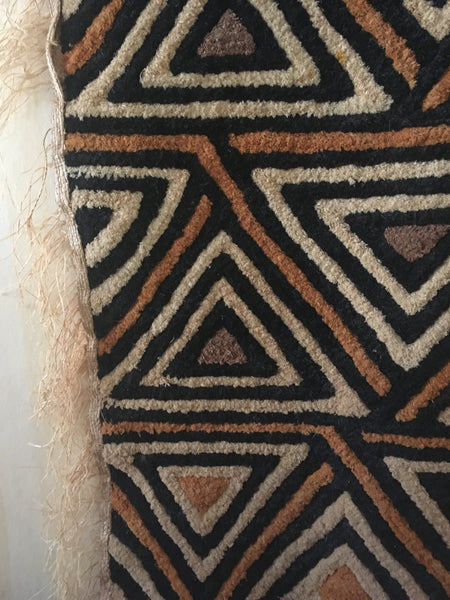
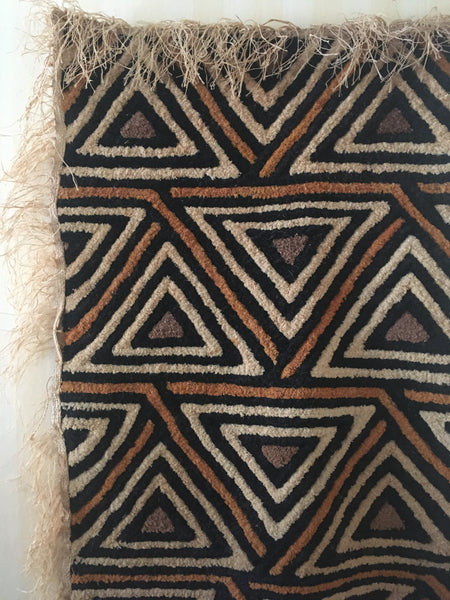
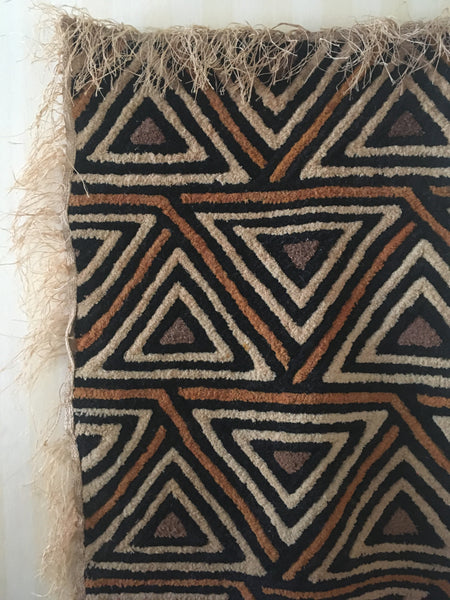
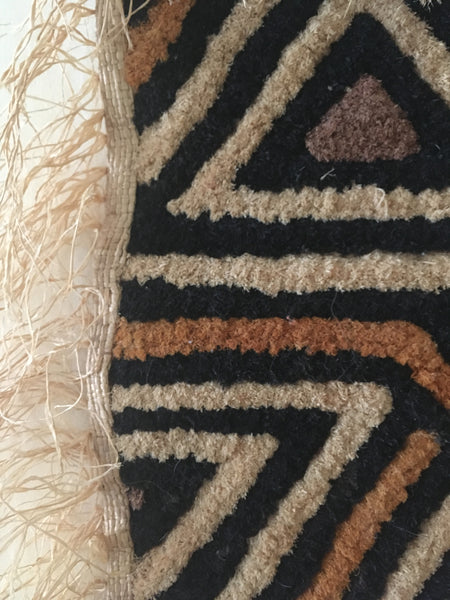
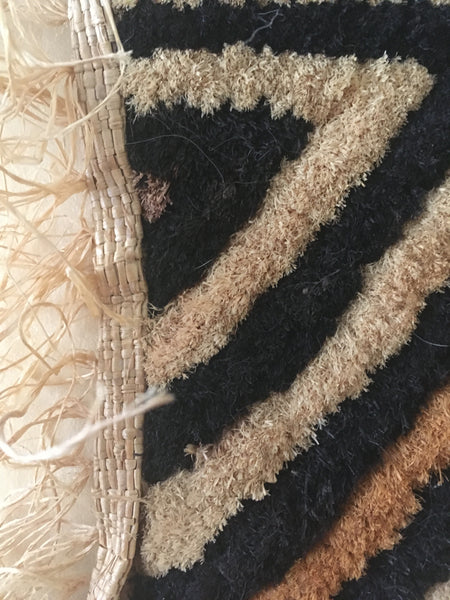
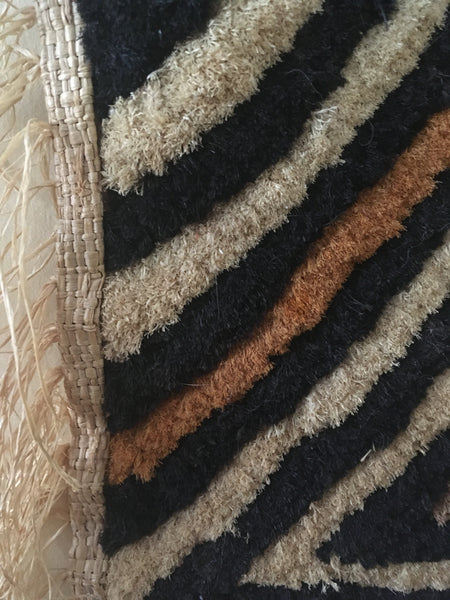
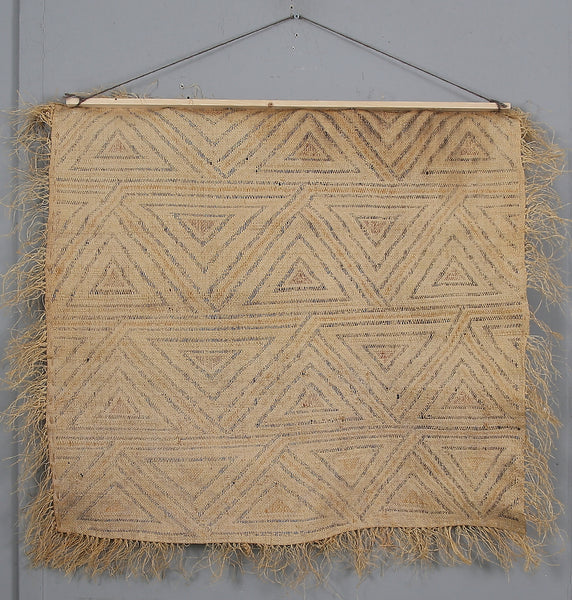











The Kuba cloth (velours du kasai) is a captivating piece of textile art hailing from the Kasai Region in the Democratic Republic of the Congo. Crafted by hand in the 1960s, this Kuba cloth wall hanging is a testament to the rich cultural heritage and artistic traditions of the Kuba people.
The textile features a meticulous process of handweaving and embroidery using raffia palm fibers, showcasing intricate geometric patterns. The use of natural pigments in the dyeing process adds an earthy and authentic touch to the piece.
As a vintage item, this Kuba Cloth is not only a stunning decorative element but also a tangible link to the past, carrying with it the history and craftsmanship of the Kuba people. Its authenticity is underscored by the fact that each Kuba cloth is one of a kind, reflecting the unique artistic expression of the weaver.
Whether displayed as a wall hanging, used as a textile accent, or incorporated into interior design, the Kuba cloth invites a sense of cultural richness and historical significance. Embrace the beauty of this vintage, authentic artifact, which stands as a unique and timeless representation of exquisite craftsmanship.
ABOUT KUBA CLOTH
Kuba cloth refers to a unique and intricate textile art created by the Kuba people of the Democratic Republic of the Congo (formerly Zaire) in Central Africa. It is known for its highly decorative and geometric designs, often characterized by bold patterns. Kuba cloth is traditionally handwoven using raffia palm fibers, which are dyed with natural pigments to achieve various colors.
The process of making Kuba cloth involves several steps. First, the raffia fibers are harvested and then softened by pounding or soaking. The softened fibers are then dyed using natural materials like leaves, bark, or clay, creating a range of earthy tones. After dyeing, the weavers use a complex technique of handweaving and embroidery to create intricate patterns on the fabric.
Kuba cloth designs often feature abstract motifs, checkerboard patterns, and symbols that hold cultural significance within the Kuba society. The finished textiles can vary in size and are used for a variety of purposes, including clothing, ceremonial attire, wall hangings, and other decorative items.
Kuba cloth has gained international recognition for its artistic value and cultural significance. It is often sought after for its unique aesthetic and the skillful craftsmanship involved in its creation. Many contemporary designers and collectors appreciate Kuba cloth for its rich cultural history and the visual impact it brings to interior design and fashion.
DIMENSIONS:
74 x 71 cm

